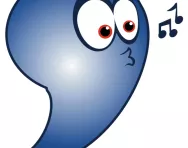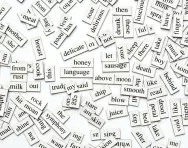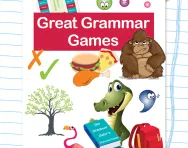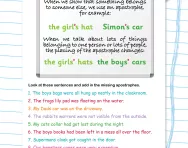Important update from TheSchoolRun
For the past 13 years, TheSchoolRun has been run by a small team of mums working from home, dedicated to providing quality educational resources to primary school parents. Unfortunately, rising supplier costs and falling revenue have made it impossible for us to continue operating, and we’ve had to make the difficult decision to close. The good news: We’ve arranged for another educational provider to take over many of our resources. These will be hosted on a new portal, where the content will be updated and expanded to support your child’s learning.
What this means for subscribers:
- Your subscription is still active, and for now, you can keep using the website as normal — just log in with your usual details to access all our articles and resources*.
- In a few months, all resources will move to the new portal. You’ll continue to have access there until your subscription ends. We’ll send you full details nearer the time.
- As a thank you for your support, we’ll also be sending you 16 primary school eBooks (worth £108.84) to download and keep.
A few changes to be aware of:
- The Learning Journey weekly email has ended, but your child’s plan will still be updated on your dashboard each Monday. Just log in to see the recommended worksheets.
- The 11+ weekly emails have now ended. We sent you all the remaining emails in the series at the end of March — please check your inbox (and spam folder) if you haven’t seen them. You can also follow the full programme here: 11+ Learning Journey.
If you have any questions, please contact us at [email protected]. Thank you for being part of our journey it’s been a privilege to support your family’s learning.
*If you need to reset your password, it will still work as usual. Please check your spam folder if the reset email doesn’t appear in your inbox.
Apostrophes – get them right every time

No punctuation mark causes as much confusion as the apostrophe. Even adults who pride themselves on having good grammar and punctuation will often be found adding in a stray apostrophe.
Likewise, it’s the punctuation mark which gets experts the most rattled. Its misuse has led to the creation of groups such as The Apostrophe Protection Society and has resulted in the creation of the term ‘greengrocer's apostrophe’. Why grocers? Well, this relates to the fact that greengrocers have become well known for their misuse of apostrophes. Google the term and you will find photographic evidence of ‘banana’s’ and ‘strawberry’s’ being advertised erroneously. And the term has stuck.


Download Fantastic FREE Grammar Resources!
- Perfect Punctuation Workbook
- Grammar Games Pack
- PLUS 100s of other grammar resources
Really apostrophe rules are quite simple, though and, if followed, the chance of making a faux pas is virtually nil. So here’s everything you need to know...
Why are apostrophes used?
An apostrophe is used for one of two reasons:
- To signify possession (the dog’s tail, the boy’s trousers). When the owners of the item are plural, the apostrophe goes AFTER the plural s (the dogs' tails, the boys' trousers).
- To show that a letter has been omitted – so can’t (instead of cannot), don’t (instead of do not)
Apostrophes are never used to indicate plurals, so you would write ‘two skirts’, not ‘two skirt’s’, and ‘all my books’ not ‘all my book’s’.
Admittedly the first rule causes more confusion than the second. If you can remember one rule about apostrophes, remember: ‘Possession not plural’.
Make this your mantra for apostrophes and it will make it much easier to remember when to use one and when not to.
How to remember where the apostrophe goes
Children tend to remember when an apostrophe is needed but forget where it goes, making errors such as ‘is’nt’, ‘are’nt’. They have grasped the concept but not the reason for it.
Remind them that the apostrophe goes instead of the missing letter, as this will help them work out where to place it. This is particularly useful for avoiding mixing up ‘it’s’ and the pronoun ‘its’.
It's and its
It's means it is. The apostrophe is used to show that a letter is missing (it is).
Its is a possessive pronoun and means 'belonging to it' ('the dog ran after its tail').








